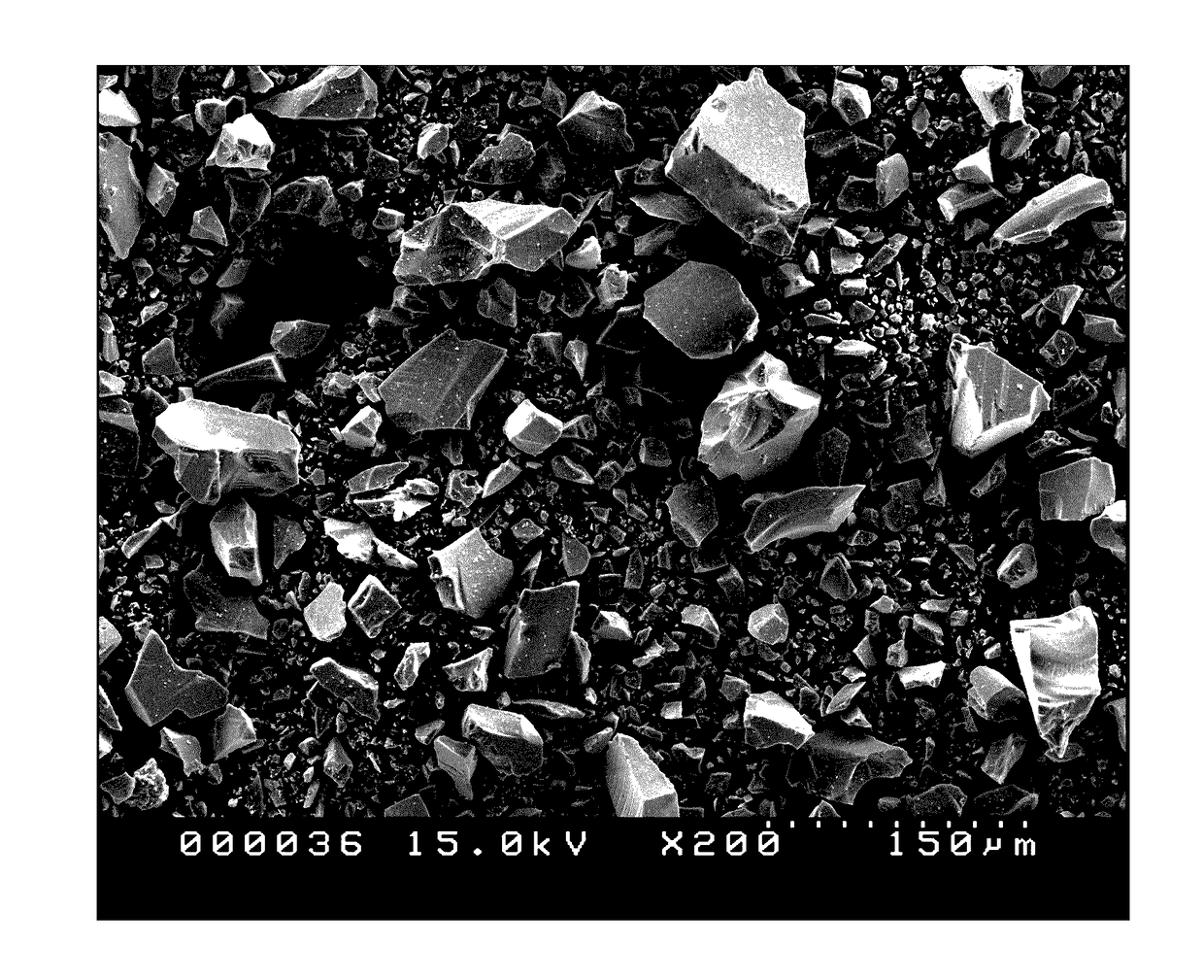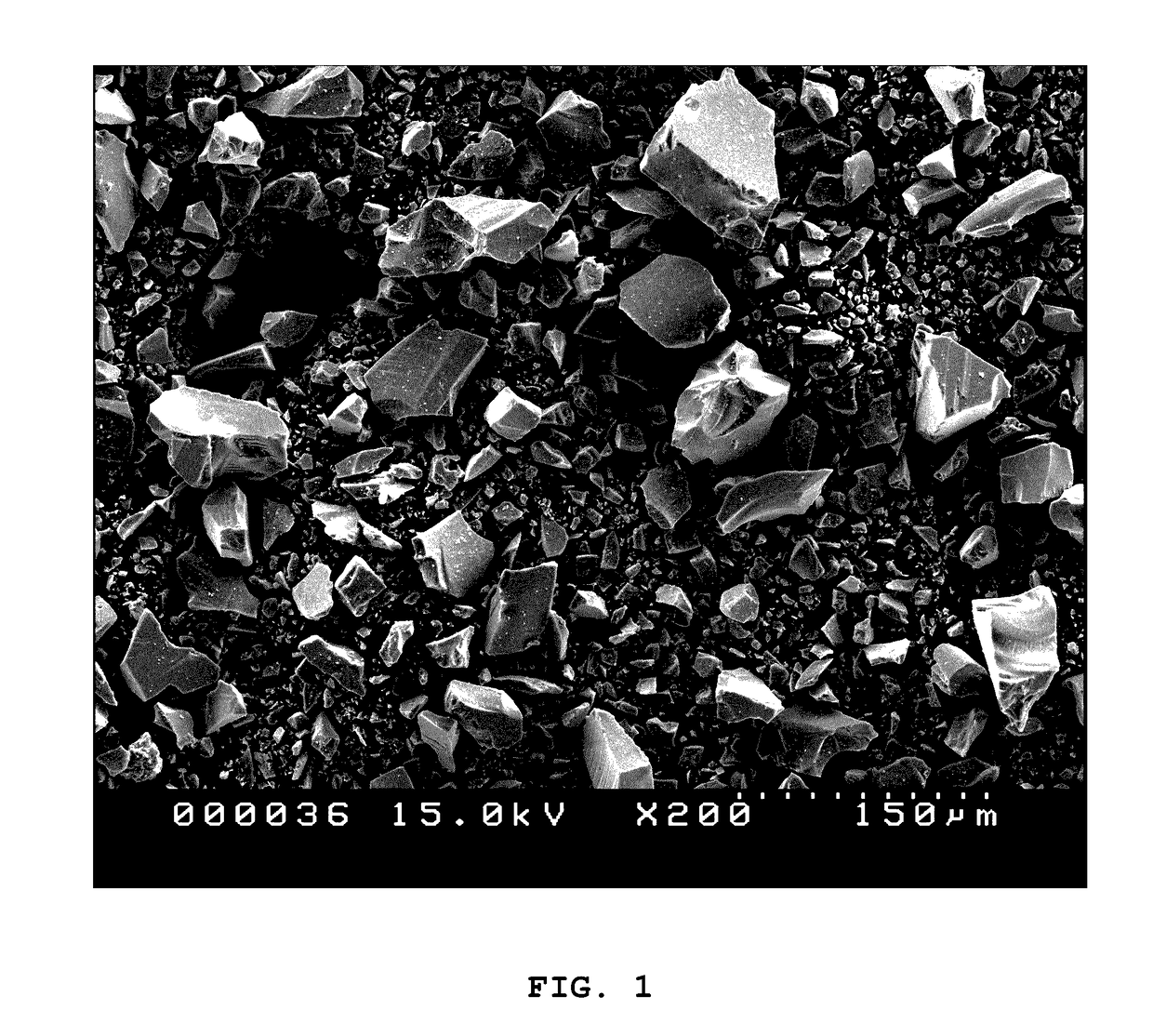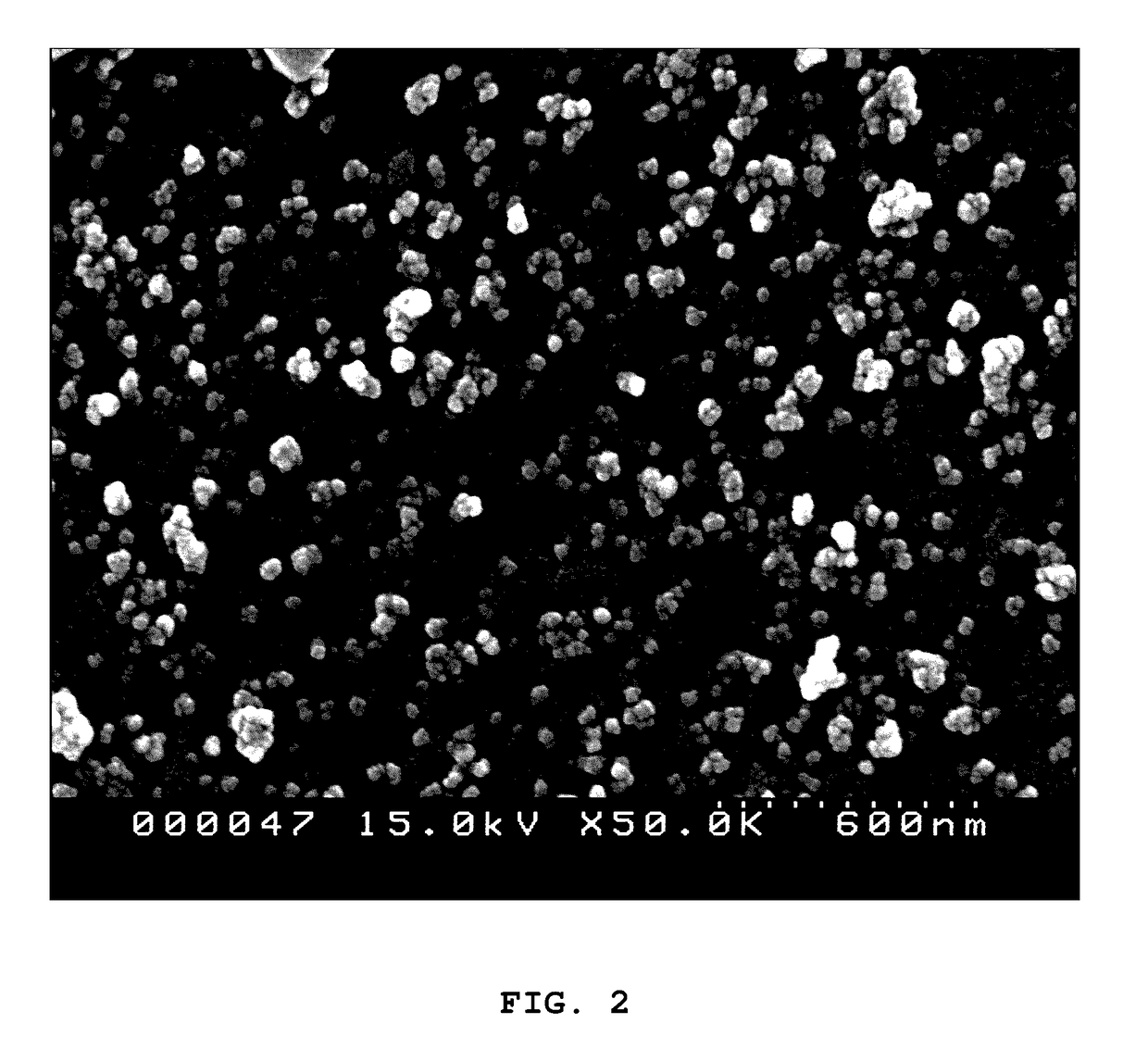Molding material for 3D printing based on crushed amorphous glass having irregular shape, molding method for 3D printing, and molded body
a 3d printing and crushed amorphous glass technology, applied in the field of three-dimensional (3d) printing technology, can solve problems such as unnecessary increase in costs, and achieve the effects of excellent flowability, high speed, and excellent flowability
- Summary
- Abstract
- Description
- Claims
- Application Information
AI Technical Summary
Benefits of technology
Problems solved by technology
Method used
Image
Examples
Embodiment Construction
[0053]The forming material for three-dimensional (3D) printing, the forming method for 3D printing, and the formed object according to the examples of the present invention will be described in detail with reference to accompanying drawings. While the present invention can be modified in various ways and take on various alternative forms, specific embodiments thereof are shown in the drawings and are described in detail below as examples. There is no intent to limit the present invention to the particular forms disclosed. On the contrary, the present invention is to cover all modifications, equivalents, and alternatives falling within the spirit and scope of the present invention. In describing each of the drawings, like reference numerals are used to refer to like elements. In the accompanying drawings, the dimensions of the structures are either enlarged for the clarity of the present invention or reduced to promote the understanding of the schematic configuration of the structure...
PUM
| Property | Measurement | Unit |
|---|---|---|
| particle diameter | aaaaa | aaaaa |
| particle diameter | aaaaa | aaaaa |
| particle diameter | aaaaa | aaaaa |
Abstract
Description
Claims
Application Information
 Login to View More
Login to View More - R&D
- Intellectual Property
- Life Sciences
- Materials
- Tech Scout
- Unparalleled Data Quality
- Higher Quality Content
- 60% Fewer Hallucinations
Browse by: Latest US Patents, China's latest patents, Technical Efficacy Thesaurus, Application Domain, Technology Topic, Popular Technical Reports.
© 2025 PatSnap. All rights reserved.Legal|Privacy policy|Modern Slavery Act Transparency Statement|Sitemap|About US| Contact US: help@patsnap.com



